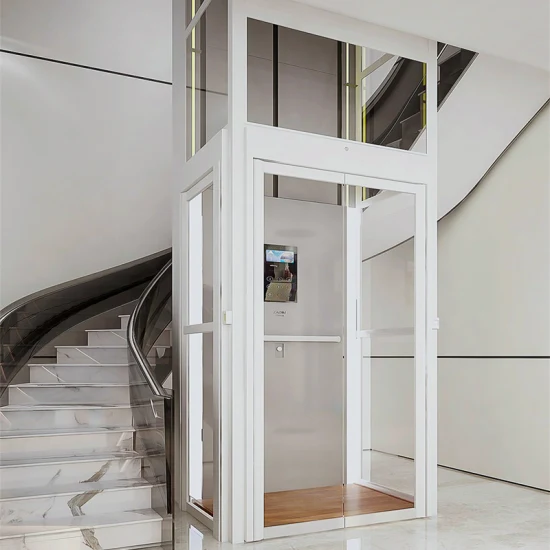London Lift Company: Trusted Professionals for All Your Vertical Transportation Requirements
London Lift Company: Trusted Professionals for All Your Vertical Transportation Requirements
Blog Article
Looking Into the Globe of Elevators: Typical Problems Faced by Various Lift Devices
As we navigate with the upright transport systems of contemporary buildings, lifts stand out as an essential element of our day-to-day lives. From hydraulic elevators to grip systems and machine-room-less layouts, each lift type comes with its collection of typical issues.
Hydraulic Lifts
Hydraulic elevators, often preferred for low-rise buildings, use fluid stress to manage the movement of the lift car (lift repair companies). This mechanism entails a hydraulic pump pressing oil right into a cylinder, triggering the elevator to relocate the preferred direction. While hydraulic lifts are understood for their silent and smooth operation, they do include their very own collection of common concerns
One common trouble with hydraulic lifts is oil leak. Furthermore, problems with the control system, such as malfunctioning shutoffs or a malfunctioning pump, can trigger interruptions in the lift's activity.
Regular maintenance and prompt repair work are important to make sure the smooth performance of hydraulic elevators. By attending to these common problems proactively, building proprietors can decrease downtime and make certain the safety and security and efficiency of their upright transport system.
Grip Elevators
When considering upright transport systems in buildings, another typical type in addition to hydraulic lifts is the grip elevator. Grip lifts operate using a system of ropes and counterweights that relocate the elevator vehicle by gripping onto the hoist ropes. This device permits smoother and faster upright transport contrasted to hydraulic systems.
One of the usual problems faced by grip elevators is rope wear. The consistent activity of the ropes within the grip system can bring about tear and wear over time, possibly causing the lift to malfunction or come to be harmful for usage. Regular examinations and maintenance of the ropes are important to make sure the elevator's correct functioning and safety.
An additional issue that grip elevators might encounter is associated with the control system. Problems with the control system can cause problems such as irregular motion, hold-ups in reaction times, or also complete shutdowns. Normal testing and upkeep of the control system are important to prevent such problems and make certain the elevator's dependability.
Machine-Room-Less (MRL) Lifts

Among the crucial elements of MRL elevators is the portable gearless grip device that is mounted within the hoistway. This equipment effectively drives the elevator automobile without the need for cumbersome devices found in traditional grip elevators. In addition, MRL elevators usually utilize a weight system to stabilize the vehicle, more improving their energy performance.
Despite their benefits, MRL lifts may deal with challenges connected to upkeep and repair work as a result of the confined room for equipment setup. Access for servicing components within the shaft can be restricted, calling for specialized training for specialists. Appropriate upkeep schedules and routine examinations are important to make certain the ongoing smooth operation of MRL elevators.
Overloading and Weight Limitation Issues
Are lifts equipped to deal with excess weight tons successfully and safely? Overloading and weight limitation problems are essential concerns in elevator operations. Elevator makers design lifts with particular weight capabilities to make sure traveler security and devices durability. Surpassing these weight restrictions can bring about various problems, including mechanical failures, hold-ups, and safety and security threats.
When lifts are overwhelmed, it puts excessive strain on the electric motor, wires, and various other elements, possibly causing failures or breakdowns. If they find excess weight, safety devices such as sensing units and overload sensing units are in place to protect against elevators from moving. Furthermore, exceeding weight limits can bring about boosted energy intake and deterioration on the elevator system.
To minimize overloading concerns, developing supervisors must prominently present weight limitations in elevators and inform occupants on the importance of sticking to these limitations - lift repair companies. Normal maintenance checks by certified service technicians can also aid guarantee that lifts are operating within london lift company secure weight specifications. By addressing overloading and weight limitation issues proactively, structure proprietors can enhance lift safety and effectiveness
Electric System Failures
Exceeding weight restrictions in elevators can not just result in mechanical concerns but likewise possibly add to electrical system failings within the lift framework. Electrical system failures are a crucial worry in lift operation, as they can trigger unanticipated shutdowns, breakdowns, or even security threats. One common electrical problem is the getting too hot of components because of extreme existing circulation brought on by overwhelming the lift beyond its capacity. This can result in harm to the control, electrical wiring, or electric motor systems, resulting in costly repair work and downtime.
Furthermore, power surges or fluctuations in the electrical supply can also interfere with the lift's procedure, impacting its performance and security. These electric disturbances can damage sensitive elevator components such as control panels, motherboard, or sensing units, bring about system failings. Routine upkeep and examinations are critical to recognize and attend to prospective electrical issues without delay, making sure the risk-free and efficient procedure of elevator systems. By sticking to weight restrictions and carrying out routine electric system checks, building owners can minimize the danger of electric failures in lifts.
Final Thought

Hydraulic elevators, typically chosen for low-rise structures, use fluid pressure lift repair near me to regulate the motion of the elevator auto.When thinking about vertical transport systems in buildings, another usual type apart from hydraulic lifts is the traction lift. Traction lifts operate utilizing a system of ropes and counterweights that relocate the elevator auto by clutching onto the hoist ropes. Unlike traditional elevators that require a separate machine space to house the equipment, MRL lifts integrate most of the parts within the shaft, getting rid of the need for a specialized machine space.In verdict, elevators encounter common problems such as hydraulic breakdowns, traction system failings, and electric system troubles.
Report this page